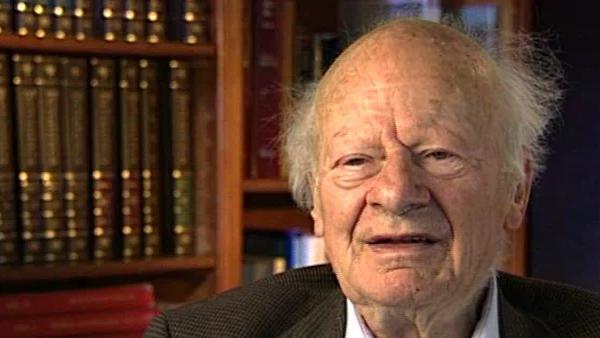NEXT STORY

Work by Fred Hoyle and Edwin Salpeter
RELATED STORIES

NEXT STORY

Work by Fred Hoyle and Edwin Salpeter
RELATED STORIES


|
Views | Duration | |
|---|---|---|---|
| 71. The temperature of the sun | 451 | 03:57 | |
| 72. Stellar composition and energy production | 394 | 03:01 | |
| 73. Work on the carbon/nitrogen cycle of massive stars | 418 | 02:46 | |
| 74. Winning the Cressy-Morrison Prize | 413 | 03:15 | |
| 75. Robert Marshak's work on white dwarfs | 363 | 03:04 | |
| 76. Edwin Salpeter's work in astrophysics | 350 | 02:51 | |
| 77. Work by Fred Hoyle and Edwin Salpeter | 415 | 04:30 | |
| 78. Winning the Nobel Prize | 1 | 784 | 01:26 |
| 79. The discovery of nuclear fission | 687 | 01:43 | |
| 80. Chain reactions and atomic bombs | 513 | 01:55 |


Now, the great question, how do you build up elements? How do you get beyond helium? And there Edward Salpeter came in, who was a graduate student with Rudi Peierls in Birmingham and then was recommended by Peierls to me as a postdoc. So whenever Peierls recommended somebody as a postdoc I eagerly took him, and vice versa, and so Salpeter came here and very soon he became interested in astrophysics. He came here, I think, in '48, but it took until '52 as far as I remember before he went to Cal Tech on a visit, being interested in astrophysics. He talked to Willy Fowler there and Fowler suggested to him 'Well, there's this problem. How are the elements built up?' And so Salpeter very soon found that indeed, if you had high temperature you could get from helium to carbon, namely two helium's can get together and make a beryllium-8. And if you have high temperature and high density, you have some probability of this beryllium-8 staying together, or maybe for one-billionth of a second, and that's enough to have a chance for another helium to get there while the beryllium-8 is there, and making... combining to make the stable nucleus, carbon-12. And he wrote that down and correctly calculated the temperature to be something of the order of a 100 million degrees instead of 20 [million degrees], and so at a 100 million degrees you would get this reaction and you would build up carbon.
The late German-American physicist Hans Bethe once described himself as the H-bomb's midwife. He left Nazi Germany in 1933, after which he helped develop the first atomic bomb, won the Nobel Prize in Physics in 1967 for his contribution to the theory of nuclear reactions, advocated tighter controls over nuclear weapons and campaigned vigorously for the peaceful use of nuclear energy.
Title: Edwin Salpeter's work in astrophysics
Listeners: Sam Schweber
Silvan Sam Schweber is the Koret Professor of the History of Ideas and Professor of Physics at Brandeis University, and a Faculty Associate in the Department of the History of Science at Harvard University. He is the author of a history of the development of quantum electro mechanics, "QED and the men who made it", and has recently completed a biography of Hans Bethe and the history of nuclear weapons development, "In the Shadow of the Bomb: Oppenheimer, Bethe, and the Moral Responsibility of the Scientist" (Princeton University Press, 2000).
Tags: California Institute of Technology, Cal Tech, Edwin Salpeter, Rudi Peierls, William Fowler
Duration: 2 minutes, 52 seconds
Date story recorded: December 1996
Date story went live: 24 January 2008